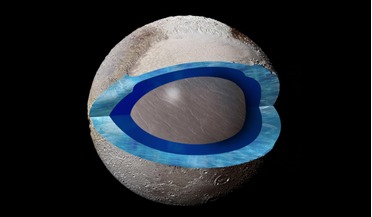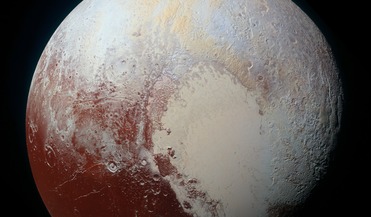 18 November 2016
Pluto's heart is an ocean of slushy ice
18 November 2016
Pluto's heart is an ocean of slushy ice
... has strong links with the evolution of key features such as the vast, low-lying basin known as Sputnik Planitia (formerly Sputnik Planum) on the heart’s western lobe. Tombaugh Regio, which is Pluto's brightest region, has puzzled astronomers...
 25 May 2018
New research suggests Pluto could be one giant comet
25 May 2018
New research suggests Pluto could be one giant comet
... been analysing the nitrogen content in the western lobe of Pluto’s “heart” – the near-equatorial region called Sputnik Planitia – to deduce how Pluto was formed. Solid molecular nitrogen (N2) appears to be the most abundant ice on the surface...
 20 May 2019
A thin layer of ice-trapped gas stops Pluto's oceans from freezing
20 May 2019
A thin layer of ice-trapped gas stops Pluto's oceans from freezing
... colleagues. What’s more the gas in the hydrates is most likely methane, and not nitrogen, which is what Sputnik Planitia is thought to be composed of. These molecules once released, then escape to help fill up Pluto’s atmosphere. This methane may...